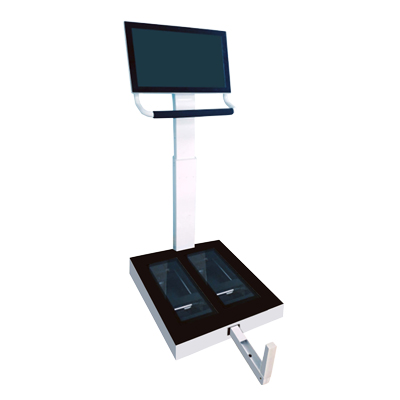As modern health consumption is heating up, people’s attention to foot health has reached an unprecedented level. As the basis for bearing the entire body weight, the health of the foot is closely related to our body shape, joints and even spine. Among them, the “arch” as the core of the foot structure plays an important role in shock absorption, buffering, support and stability. So, the question is – how to scientifically evaluate a person’s arch state?
The answer is: foot 3D scanner.
What is the arch? Why is it so important?
Simply put, the arch is the natural arc in the middle of our foot. It is mainly divided into three types: normal arch, low arch (commonly known as flat feet) and high arch. A normal arch can disperse the pressure when walking well, but if the arch structure is abnormal, it is easy to cause foot pain, knee pain, leg fatigue and even spinal problems.
The traditional method of judging the arch mainly relies on doctors to observe or step on the ink board, but this method is not accurate enough and difficult to quantify. The emergence of foot 3D scanners has brought a more scientific and quick solution.
How does the foot 3D scanner measure the arch?
Principle 1: Laser or structured light scanning to obtain the three-dimensional shape of the foot
Most foot 3D scanners use laser scanning or structured light projection technology to complete the three-dimensional modeling of the sole and instep in a few seconds. By collecting key data such as sole height, instep curve, heel width, and center of gravity distribution with high precision, a complete “digital foot model” is constructed.

Principle 2: Degree of sole depression to determine the height of the arch
The system automatically extracts the “landing degree” of the middle section of the sole. Generally speaking, the higher the middle section of the sole is from the ground, the more obvious the arch is; the closer it is to the ground, the lower the arch is. This part of the data compares the height curve of the sole model with the standard arch model to obtain a clear arch height indicator, so as to determine whether it is a normal arch, a low arch, or a high arch.
Principle 3: Foot pressure center of gravity distribution to assist in judging the arch function
Some high-end 3D scanners also integrate a dynamic foot pressure analysis system. By detecting the pressure distribution of each area of the foot when standing or walking, it is further verified whether the support force of the arch is balanced. For example: flat feet often manifest as abnormally high pressure in the middle of the sole, while high arches may cause excessive pressure on the forefoot and heel.
3D morphology + foot pressure analysis make the judgment of arch status more scientific, comprehensive and visual.
The value of foot scanning is far beyond your imagination
Understanding the state of the arch is not just to buy a pair of shoes that fit your feet, but also a proactive management of the health of the whole body. Abnormal arches are likely to cause a series of problems such as sports injuries, discomfort from standing for a long time, and rapid deformation of shoes. With a 3D scanner, you can not only scientifically judge the state of the arch, but also get professional insole customization, exercise advice and even rehabilitation plans.
